24 Wild Animals in Portugal [Wildlife in Portugal]
Want to know more about the wildlife in Portugal?
Discover 24 wild animals in Portugal in this post, as well as interesting facts about them. 🇵🇹
Learn All About Portuguese Animals
Ready to learn all about Portuguese animals?
I’ve always been fascinated by animals, and by how they can be so different from one country to another. In this guide, we’ll focus on the many animals Portugal has on the land, in the sky, and under water.
I’ve split the guide in 4 categories:
- Native animals from Portugal
- Endangered animals of Portugal
- What is the national animal of Portugal?
- How many animals native to Portugal?
Let’s dive in right away with our first category!
Native Animals from Portugal
Portugal is a European country located in the southwestern part of the continent, east to the Atlantic Ocean. It has the westernmost point of mainland Europe, was a particularly important commercial and maritime empire, and used to have one of the largest colonial empires in the world. It is only bordered by Spain, and its capital and largest city is Lisbon, which counts more than 544,000 inhabitants (but more than 2,871,000 if you include the metropolitan area).
An interesting part of the country that I wanted to tackle is its wildlife. In light of that, I have listed the best of it, and I hope you will love learning what animals live in Portugal.
Here’s the Portugal animals list.
1. Bonelli’s eagle
- Name: Bonelli’s eagle
- Scientific name: Aquila fasciata
- Conservation status:
The Bonelli’s eagle is a large species of bird of prey native to the Iberian Peninsula, North Africa, the Indian subcontinent, Southeast Asia, and the Arabian Peninsula. It lives in the hills and mountains of Portugal, at elevations of up to 1,500 m / 4,900 ft above sea level.
This eagle lives in territories of about 130 km² / 50 sq mi in Portugal, and there are only around 75 to 90 pairs left in the country.
2. Iberian lynx
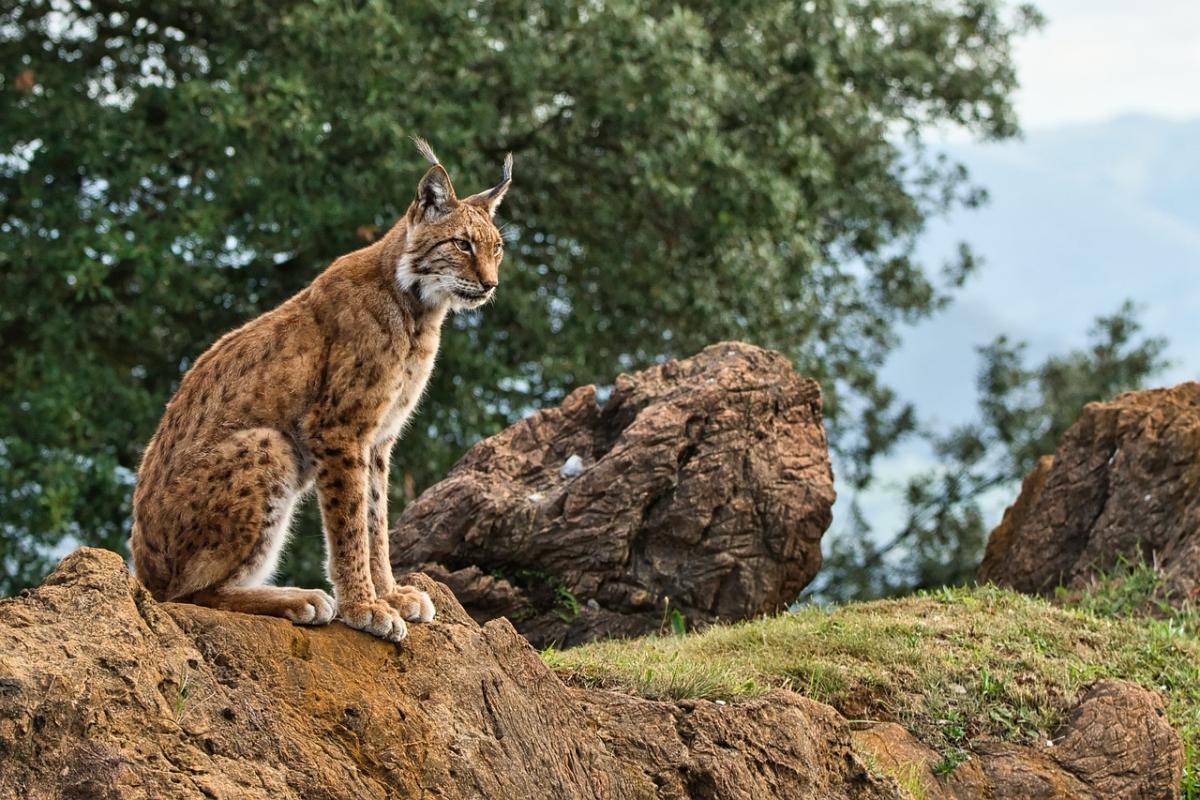
- Name: Iberian lynx
- Scientific name: Lynx pardinus
- Conservation status:
The Iberian lynx is a medium-sized species of wild cat endemic to the Iberian Peninsula. Its population has sharply declined throughout the 20th century, primarily due to intense hunting, habitat fragmentation, and depletion of prey. Reintroduction efforts have been established in the country, and 12 of the 17 individuals have established a territory, which is a success.
This lynx lives in northern Portugal, but also in the south, which is quite peculiar. There, it inhabits forests and is strictly protected.
3. Portuguese ibex
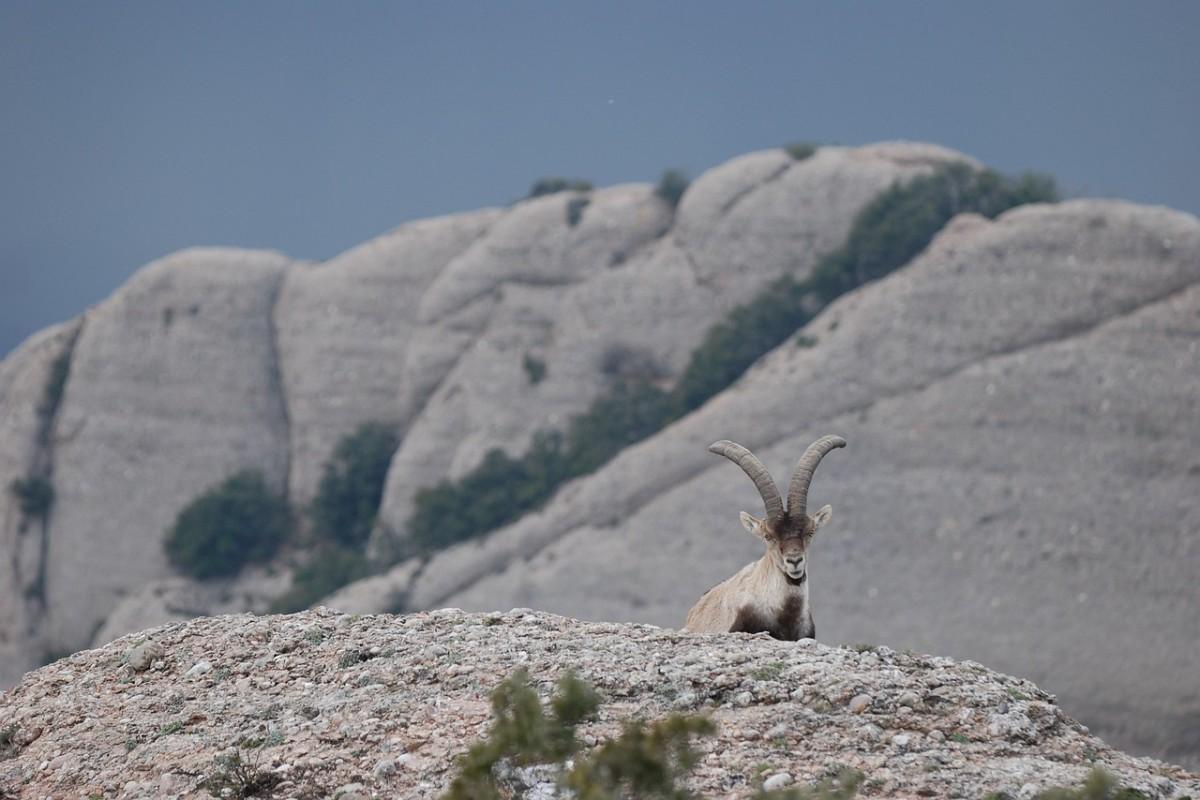
- Name: Portuguese ibex
- Scientific name: Capra pyrenaica lusitanica
- Conservation status:
There are a lot of species threatened by overhunting in Portugal, and the Portuguese ibex was one of them. It used to live in the northern, mountainous areas of Portugal, and was widespread within its range until 1800, after which hunting pressure never ceased increasing. Other factors such as predation, disease outbreaks, and a disproportionate amount of males were also fatal to this species.
The last known specimen of Portuguese ibex died in 1890, in Spain.
4. Red squirrel
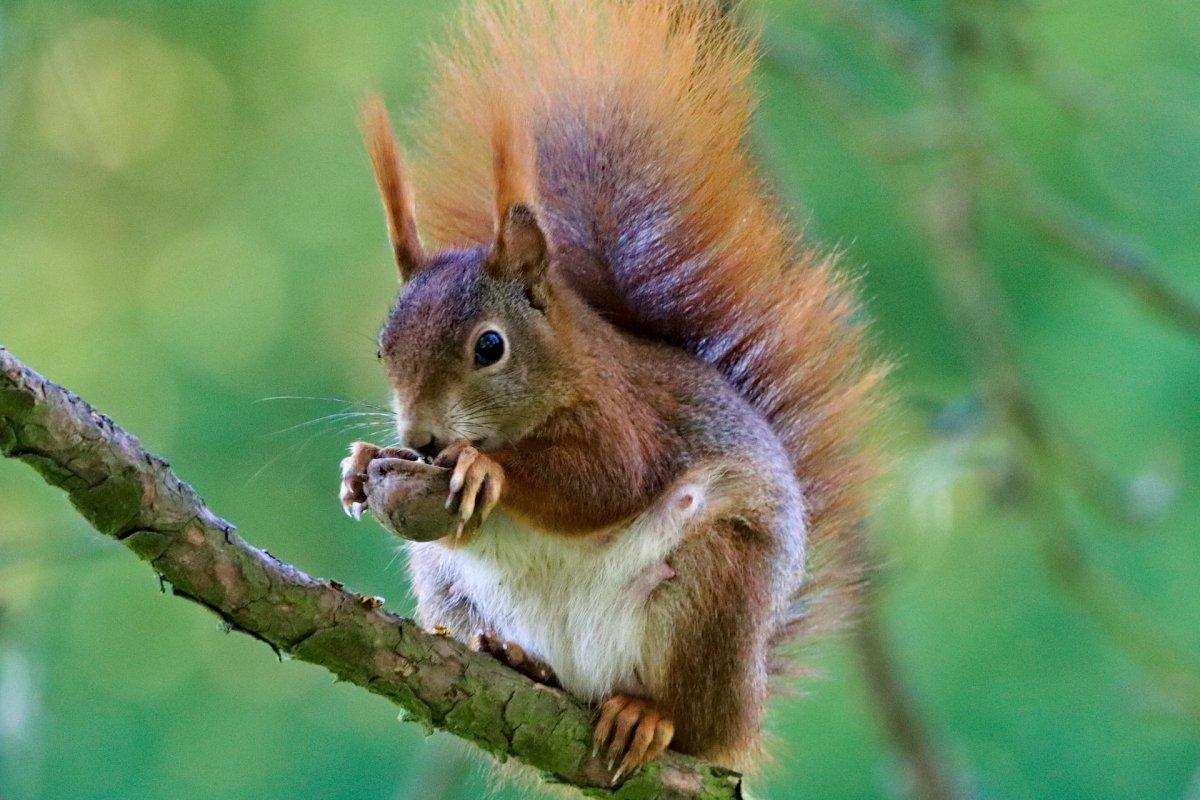
- Name: Red squirrel
- Scientific name: Sciurus vulgaris
- Conservation status:
The red squirrel is a species of tree squirrel found throughout a very wide range, from the Iberian Peninsula to eastern Asia. It is very common and is a herbivorous, arboreal rodent.
This squirrel makes a nest out of twigs and inhabits temperate broadleaf woodlands, as well as coniferous forests. It is both solitary and shy and does not share food with others. Although it mainly feeds on nuts, it will sometimes raid bird nests and feed on their nestlings or eggs.
5. Sperm whale
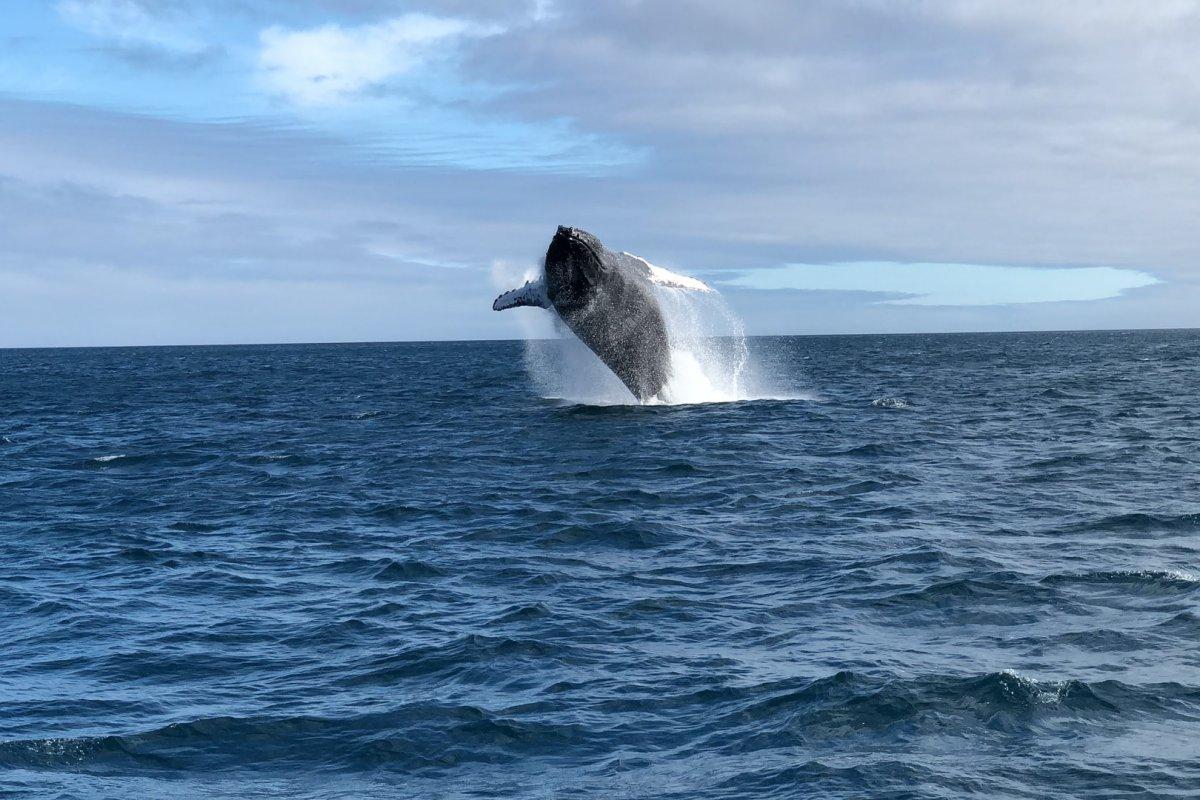
- Name: Sperm whale
- Scientific name: Physeter macrocephalus
- Conservation status:
I bet you didn’t see this transition, from the small, inoffensive red squirrel to the largest-toothed predator in the world, the sperm whale!
This whale has been extensively hunted in Portugal, so much so that whaling became forbidden by law in 1984. It was a prime target for this industry and seriously suffered from that. Now, although protected, the sperm whale needs to recover, which is not an easy feat with various threats such as a low reproductive rate, climate change, and pollution.
6. Cantabrian brown bear
- Name: Cantabrian brown bear
- Scientific name: Ursus arctos pyrenaicus
- Conservation status:
Previously thought to be locally extinct in Portugal, the Cantabrian brown bear, also known as the Iberian brown bear, was recently sighted in the country. It is a subspecies of the European brown bear endemic to the Cantabrian Mountains of Spain and Portugal.
Despite being very strong, it is timid and avoids human contact whenever it can. While it used to be common throughout the Iberian Peninsula, the first half of the 20th century saw a drastic decline in this bear’s population, primarily due to habitat loss and persecution through hunting.
7. Egyptian vulture
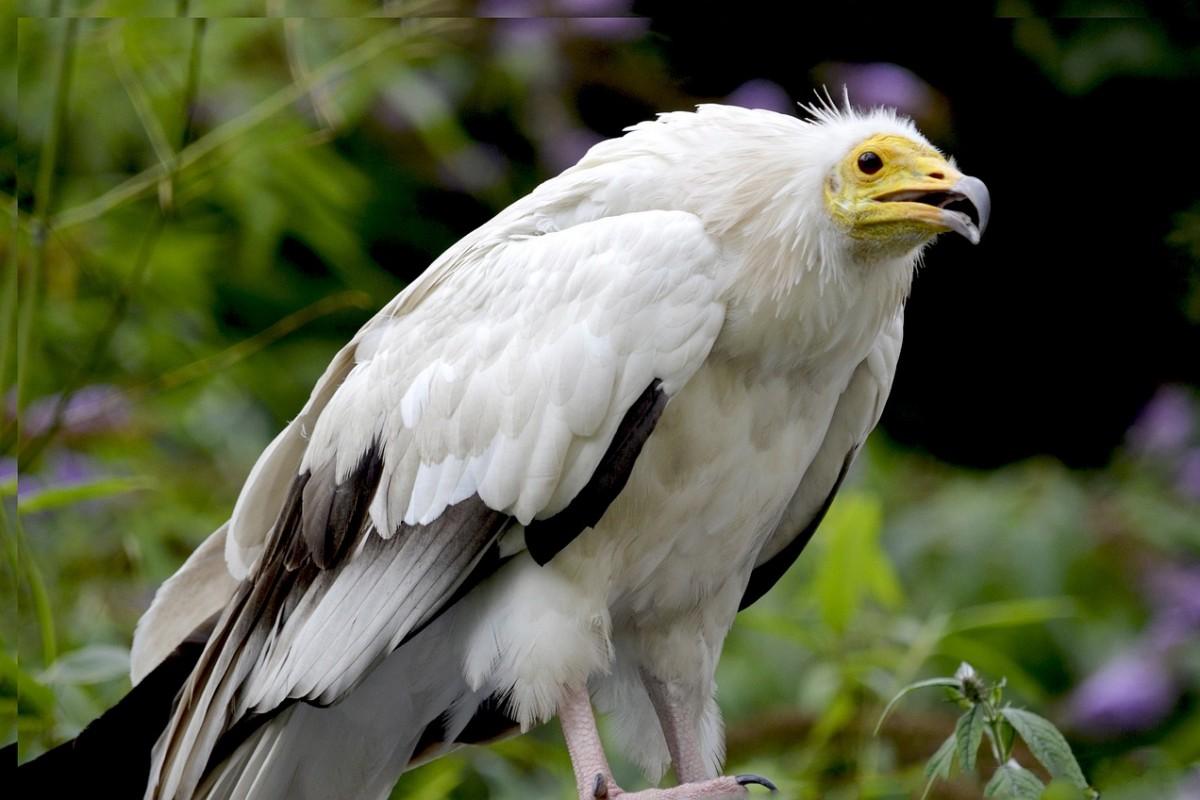
- Name: Egyptian vulture
- Scientific name: Neophron percnopterus
- Conservation status:
The Egyptian vulture, also known as the pharaoh’s chicken or the white scavenger vulture, is a small species of Old World vulture native to not only Egypt but also the Iberian Peninsula, sub-Saharan Africa, the Indian subcontinent, the Arabian Peninsula and the Middle East.
Similarly to most vultures, the Egyptian vulture is a scavenger that feeds on carrion; it is very opportunistic though, and can also hunt for small mammals, reptiles, and birds.
8. Red deer
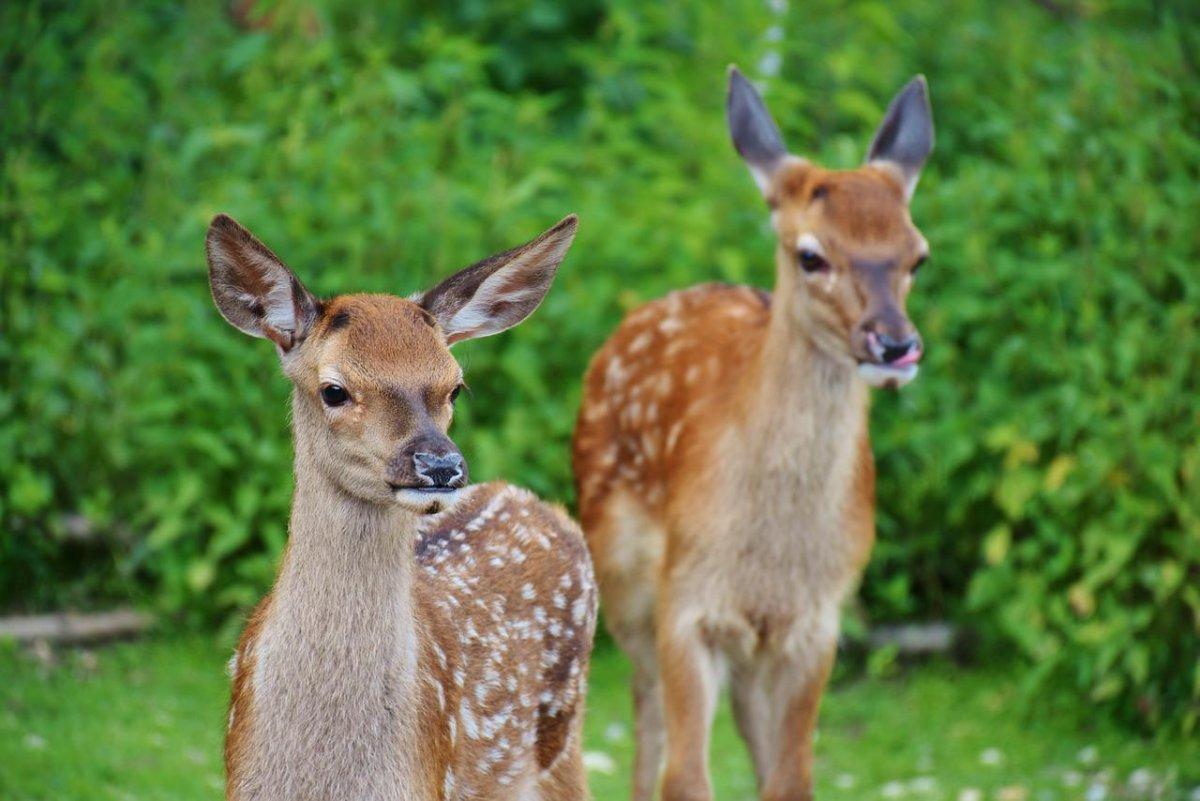
- Name: Red deer
- Scientific name: Cervus elaphus
- Conservation status:
The red deer is one of the most widespread and common animals in Europe. In fact, it can even be found in North Africa, the Middle East, and western Asia, and has had a long history of interaction with humans, being depicted in cave art from 40,000 years ago!
In Portugal, this deer used to be pretty rare, and conservation and reintroduction efforts have proven to be necessary to save this species in the country.
9. Black stork
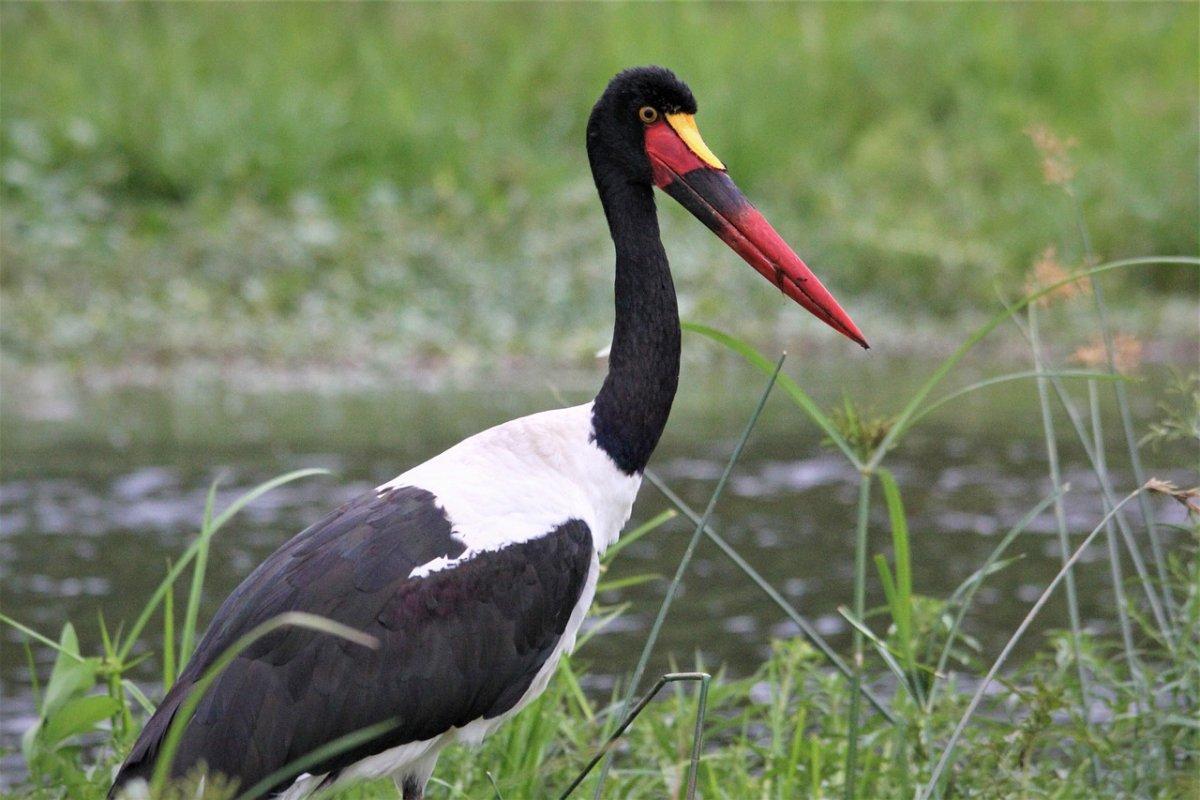
- Name: Black stork
- Scientific name: Ciconia nigra
- Conservation status:
While most people know about the white stork, the black stork is a much less famous relative. It is a large migratory bird that lives in the southern parts of Africa and breeds throughout Eurasia.
In Portugal and Spain, its numbers are increasing; it can be found in the central parts of Portugal, where it feeds on fish. In other countries such as Scandinavia and western Europe, its numbers are seriously on the decline, however, and it is extirpated from a lot of areas.
10. Red fox
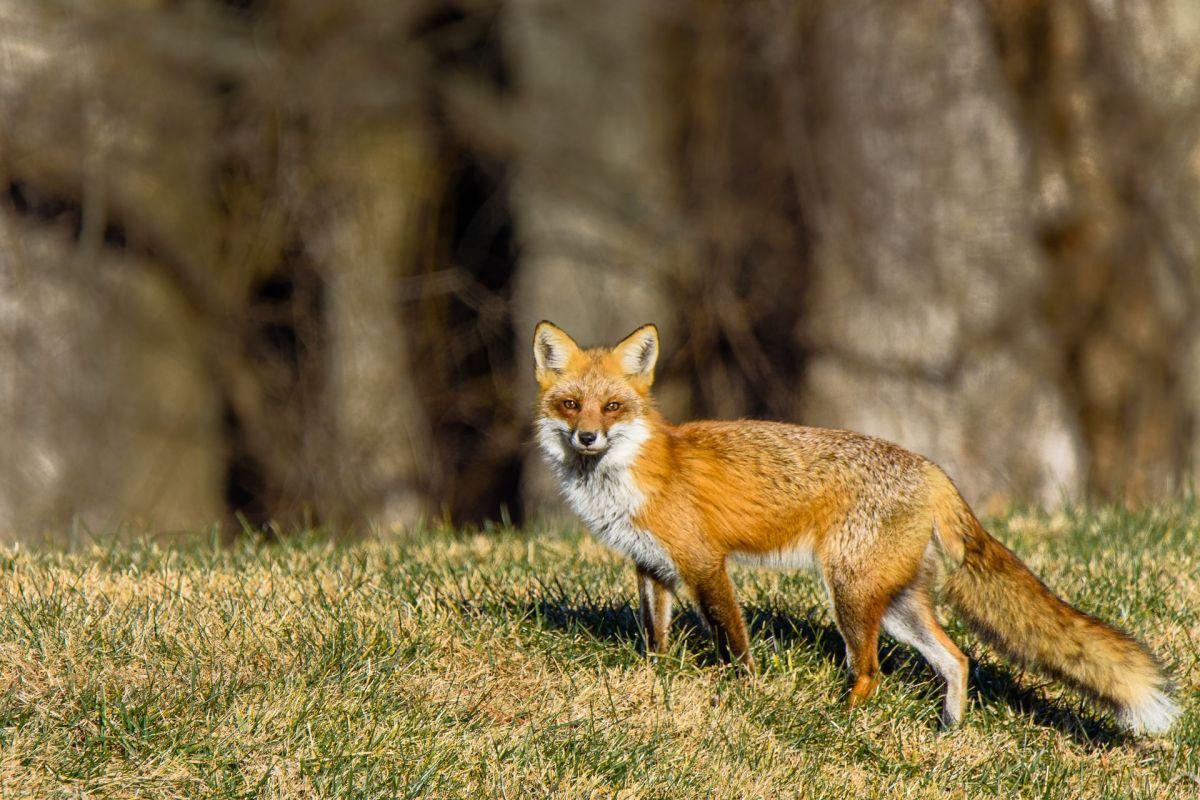
- Name: Red fox
- Scientific name: Vulpes vulpes
- Conservation status:
The red fox is the largest of the true foxes, and one of the most widespread carnivores on the planet: it can be found throughout almost the entirety of the Northern Hemisphere and was also introduced to Australia, where it is known as a serious pest.
This fox is one of the most common mammals in Portugal. It inhabits a wide variety of habitats, and feeds on small mammals such as rodents, but also fruits and plant material.
11. Pin-tailed whydah
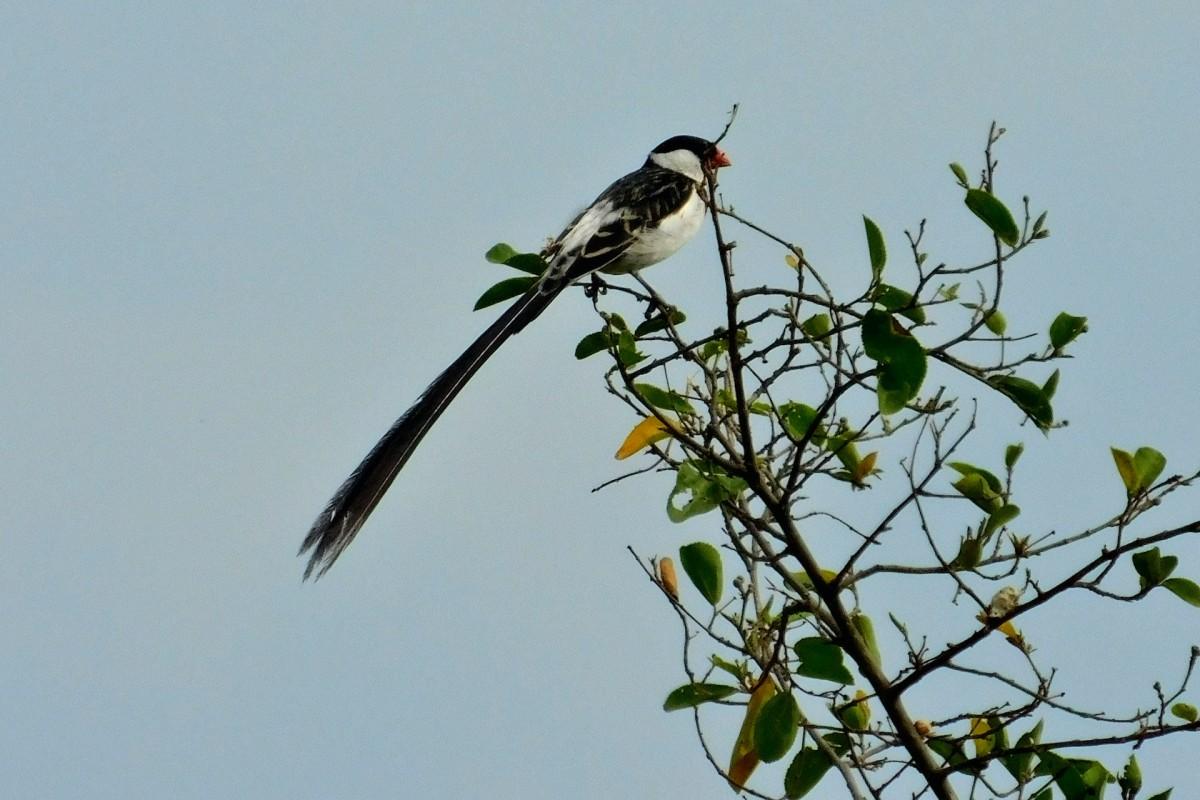
- Name: Pin-tailed whydah
- Scientific name: Vidua macroura
- Conservation status:
The pin-tailed whydah is an exotic species of songbird found in the highlands of São Miguel and Madeira. Outside of that, it also lives in much of sub-Saharan Africa and has been introduced to various areas such as southern California, Singapore, and Puerto Rico.
This bird inhabits savannas, scrubs, and grasslands, but also gardens and parks. It is mostly settled around the region of Aveiro in Portugal, both in the north and the south.
12. European rabbit
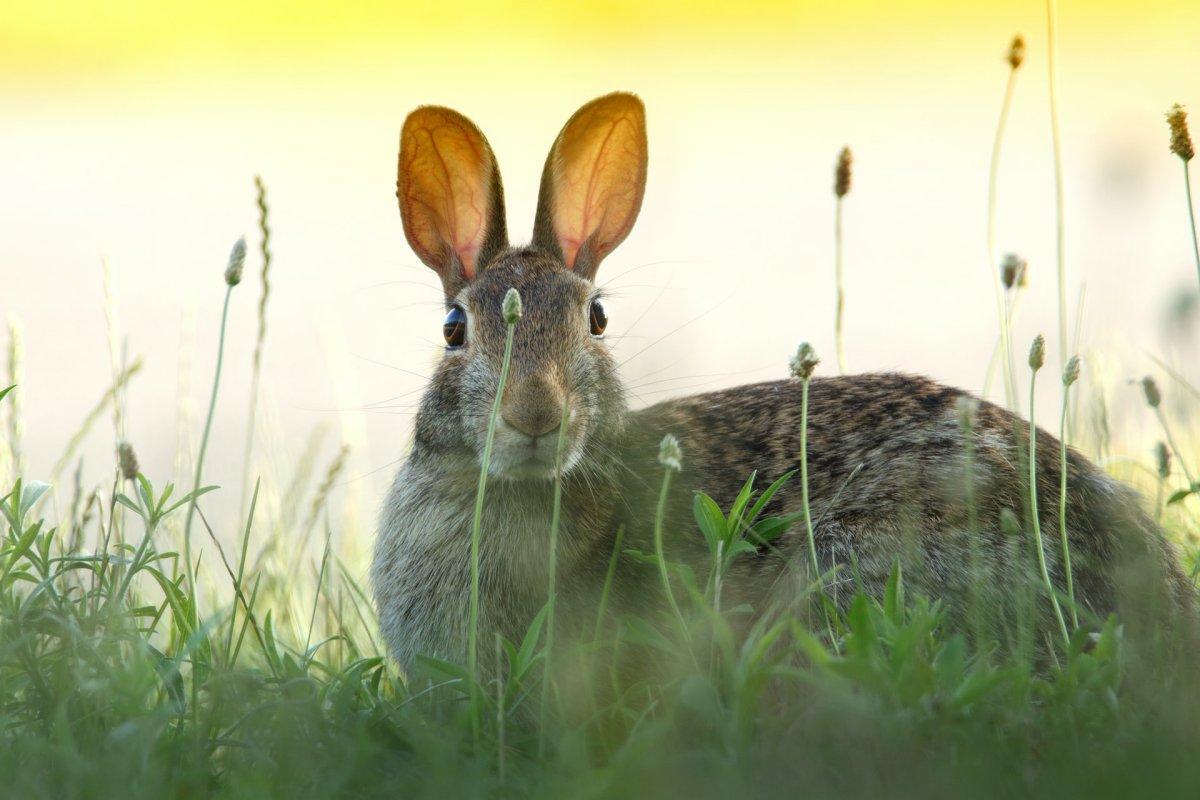
- Name: European rabbit
- Scientific name: Oryctolagus cuniculus
- Conservation status:
The European rabbit, also known as the coney, is a species of rabbit native to western Europe, more precisely the Iberian Peninsula and western France, as well as northwestern Africa. It has been introduced to other continents such as South America and Oceania, where it has had devastating effects on local biodiversity and is considered a serious problem.
While this rabbit used to be considered near threatened with extinction in Portugal until 2018, it is listed as endangered on a global scale.
13. Common genet
- Name: Common genet
- Scientific name: Genetta genetta
- Conservation status:
The common genet is a small species of viverrid native to Africa and introduced to southwestern Europe, including Portugal. It inhabits sub-Saharan, southern, and northwestern Africa, and lives in evergreen and deciduous forests.
One very rare melanistic individual was sighted in Portugal in 2019. The main threat to this species in Portugal is predator traps, which kill many common genets every year, but habitat loss and urban expansion are also serious threats.
14. European badger
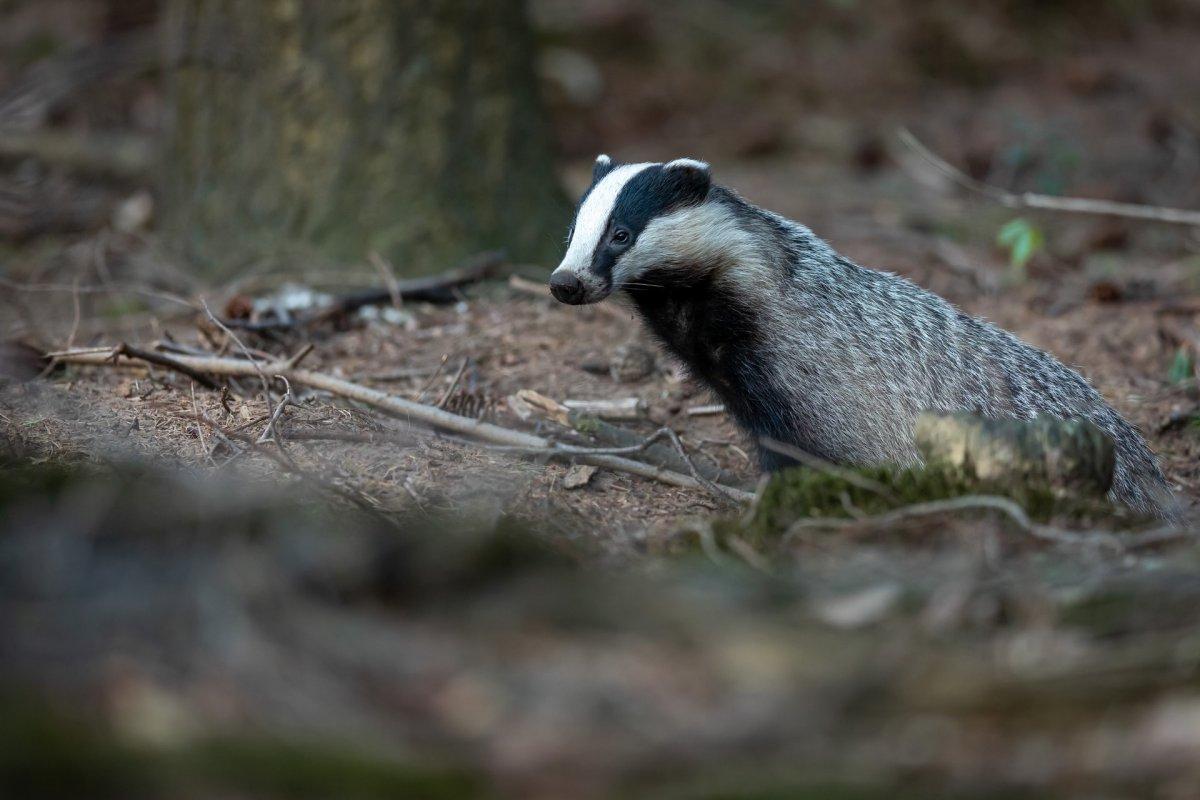
- Name: European badger
- Scientific name: Meles meles
- Conservation status:
The European badger is a species of mustelid native to almost all of Europe and the Middle East. It has a large, stable population and a very wide range, which is why it is considered of least concern.
This badger is one of the least carnivorous members of the order Carnivora, as it feeds on practically anything and is rather an opportunistic omnivore. Although sometimes heavily hunted, it is not of economic importance.
15. European wildcat
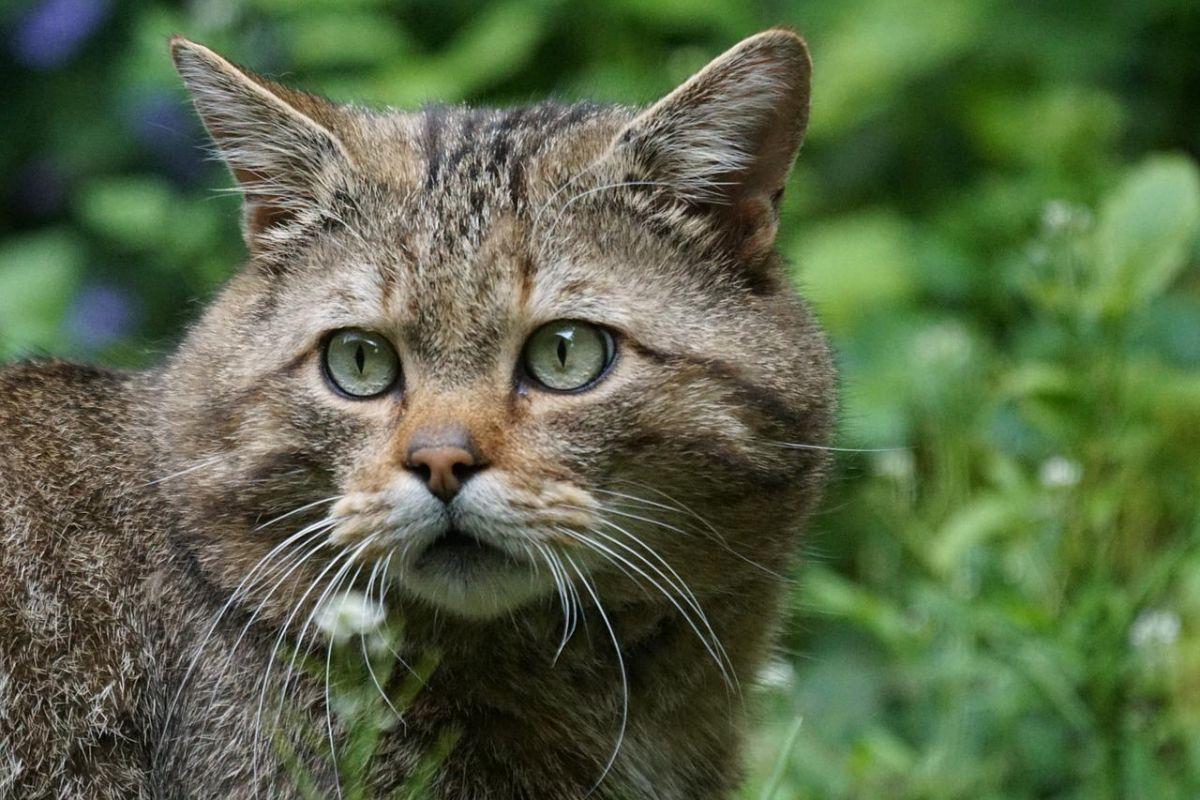
- Name: European wildcat
- Scientific name: Felis silvestris
- Conservation status:
The European wildcat is a small species of wildcat native to much of Europe. It inhabits forests and has gray, striped fur with a black-tipped tail. Usually nocturnal, this felid preys on rodents, small carnivores, and deer fawns in order to survive.
One of the main threats to the European wildcat in Portugal is interbreeding with feral cats, which disrupts the species as a whole and threatens its survival.
16. Griffon vulture
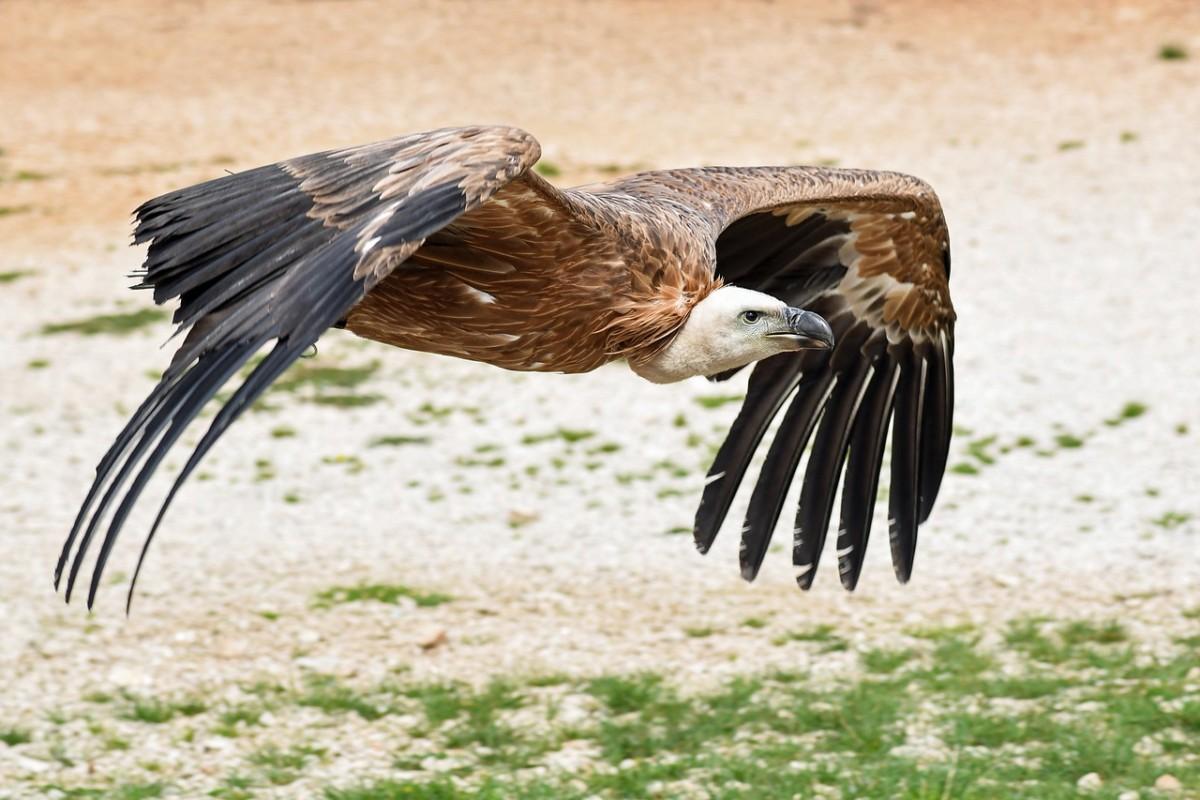
- Name: Griffon vulture
- Scientific name: Gyps fulvus
- Conservation status:
The griffon vulture, also known as the Eurasian griffon, is a large species of Old World vulture. It lives in flocks, and soars over open areas to find the carcasses it feeds on; it lives in undisturbed areas, and nests in colonies on cliffs.
There are several hundreds of pairs of griffon vultures in Portugal, mainly living in the northeast. Occasionally, some individuals venture into the southwestern parts of the country.
17. Rough-toothed dolphin
- Name: Rough-toothed dolphin
- Scientific name: Steno bredanensis
- Conservation status:
The rough-toothed dolphin is a species of dolphin living in deep, warm, and tropical waters of the world, as far north as western Europe. It is pretty large, reaching lengths of up to 2.83 m / 9.3 ft, and weighing up to 155 kg / 342 lb.
This dolphin can only be spotted far off-shore, at depths of at least 1 km / 0.62 mi below sea level.
18. European pine marten
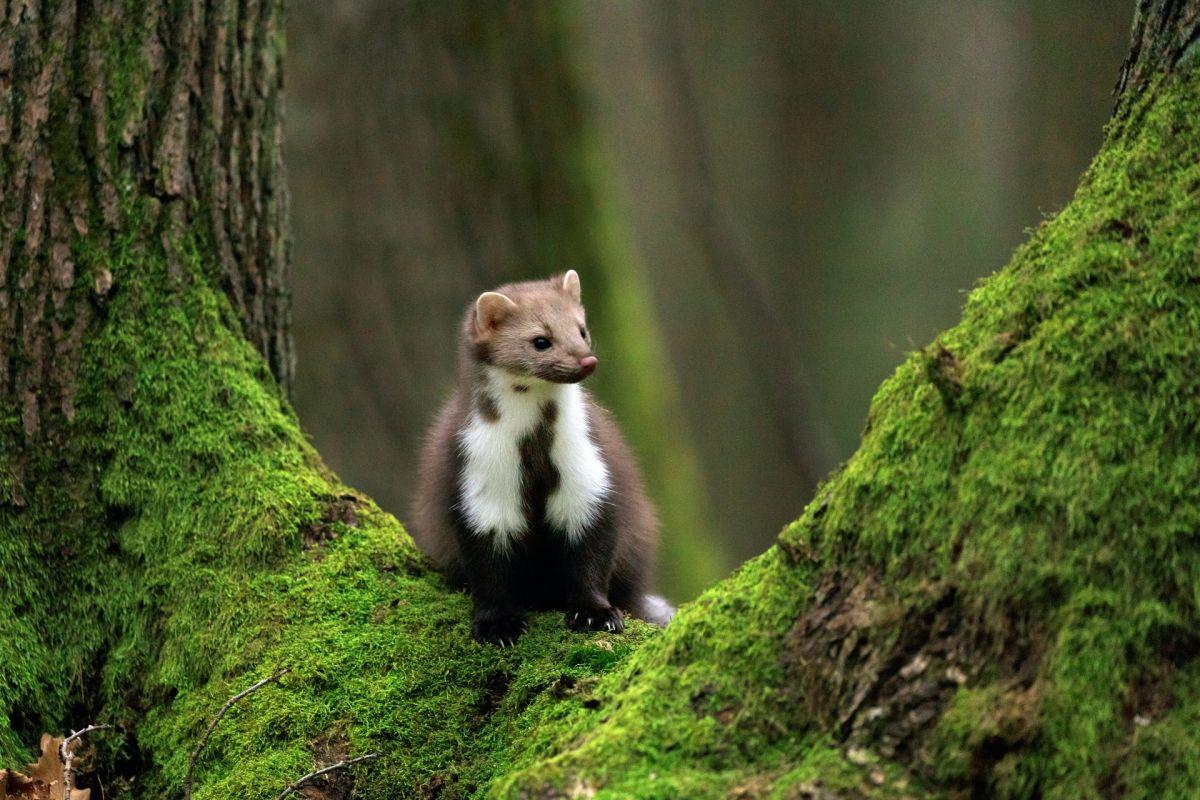
- Name: European pine marten
- Scientific name: Martes martes
- Conservation status:
The European pine marten, also known as the European marten, the pine marten, the baum marten, or the sweet marten, is a species of mustelid native to much of Europe. In Portugal, it can be found in the northernmost areas of the country, where it inhabits well-wooded areas.
This marten is the only mustelid with semi-retractable claws, which allow it to lead a much more arboreal lifestyle, and is particularly useful to find bird nestlings and eggs.
19. Egyptian mongoose
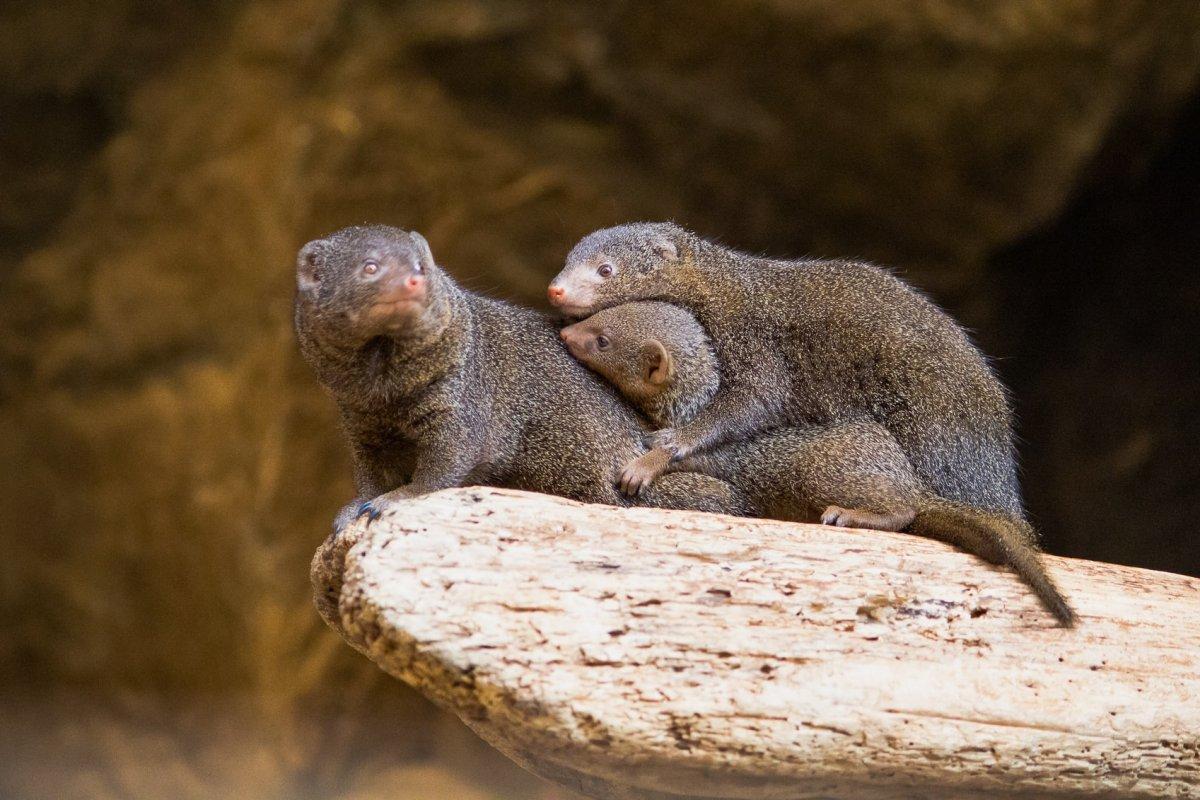
- Name: Egyptian mongoose
- Scientific name: Herpestes ichneumon
- Conservation status:
The Egyptian mongoose, also known as the ichneumon, is a species of mongoose native to the coastal Mediterranean Sea, as well as much of sub-Saharan Africa. Whether it has been introduced to the Iberian Peninsula or is native to it is unclear.
In Portugal, the Egyptian mongoose can be found north of the Douro River to the south of the country. It is threatened by trapping, poaching, and use for rituals (in some countries).
20. European hedgehog
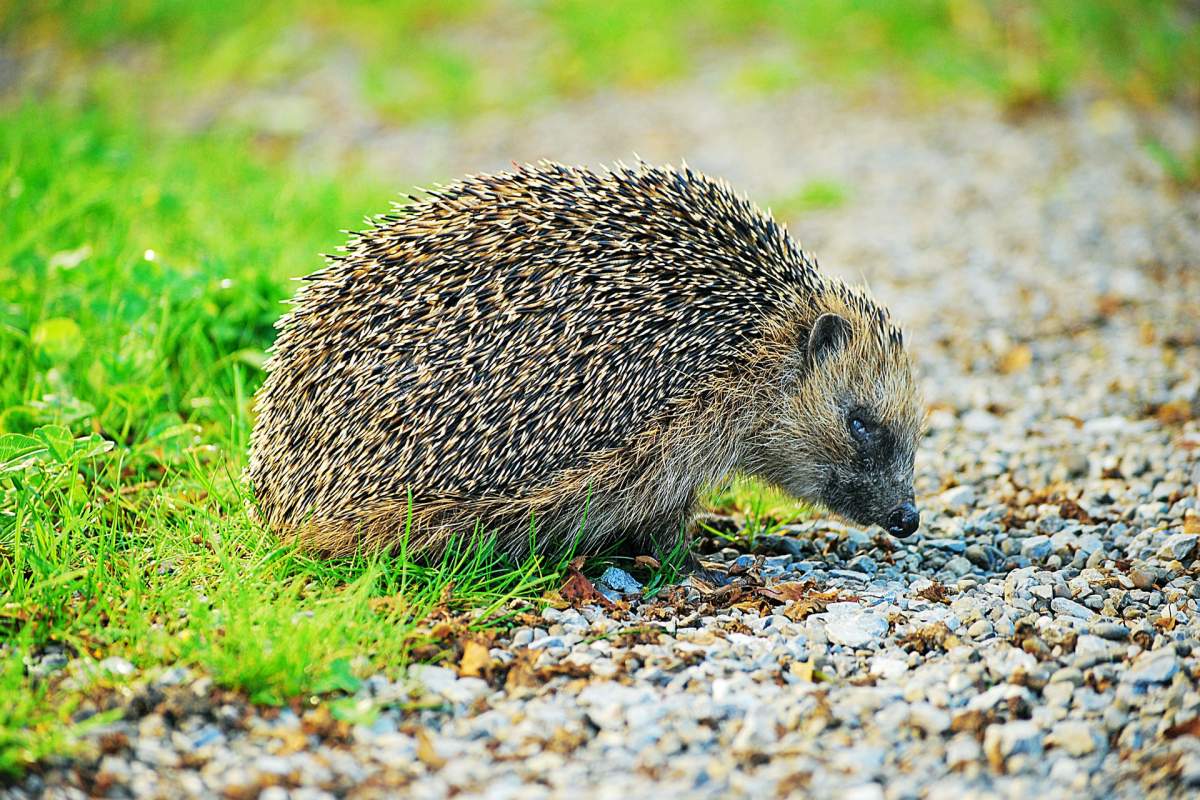
- Name: European hedgehog
- Scientific name: Erinaceus europaeus
- Conservation status:
The European hedgehog, also known as the common hedgehog or the West European hedgehog, is a species of hedgehog native to much of Europe, and as far north as Scandinavia. It lives in a wide range of habitats and is well-known by Europeans because it is commonly seen in gardens.
This hedgehog is insectivorous and feeds on beetles, slugs, and caterpillars. It has a peculiar and characteristic behavior, constantly hesitating and stopping to smell the air.
21. Atlantic spotted dolphin
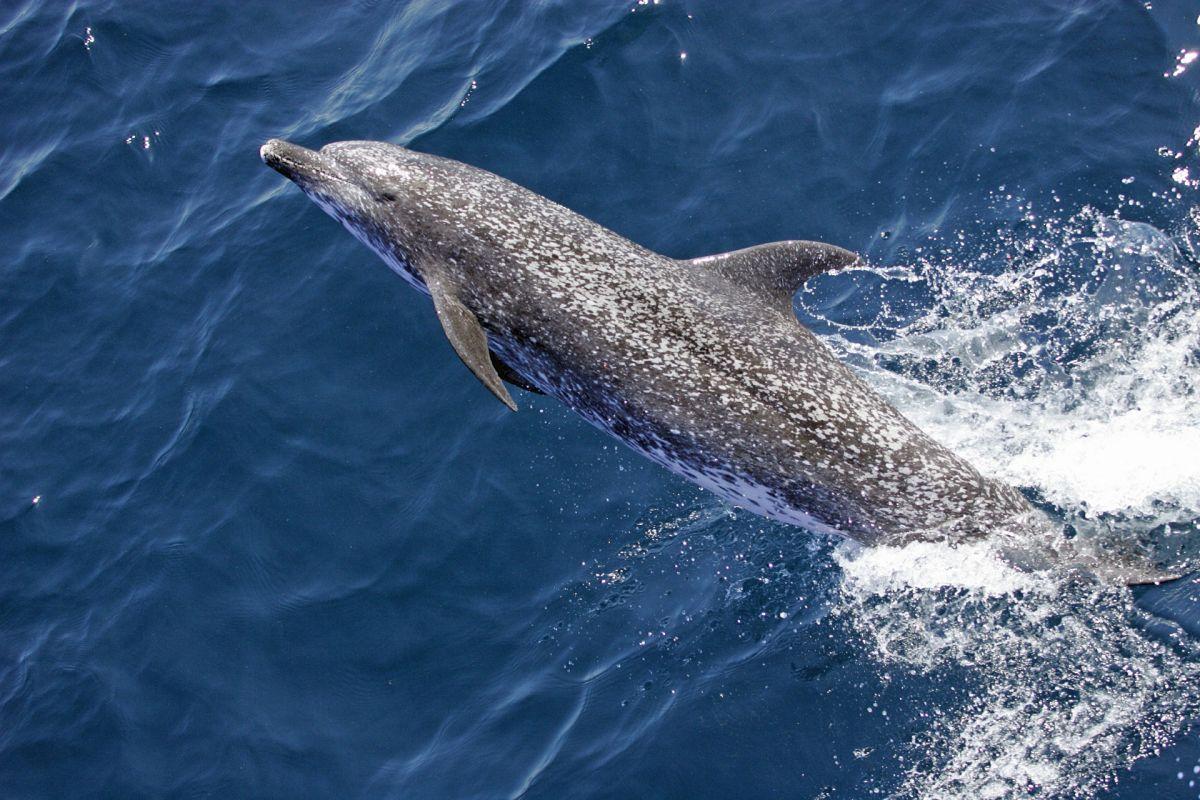
- Name: Atlantic spotted dolphin
- Scientific name: Stenella frontalis
- Conservation status:
The Atlantic spotted dolphin is a species of dolphin native to temperate and warm waters of the Atlantic Ocean, from southern Portugal to southwestern Africa and southeastern South America. The older it gets, the more recognizable it becomes, having more and more spots all over its body.
This dolphin is a highly sociable species, and lives in groups of 5 to 15 individuals, often mixed with common bottlenose dolphins.
22. Kemp’s ridley sea turtle
- Name: Kemp’s ridley sea turtle
- Scientific name: Lepidochelys kempii
- Conservation status:
Kemp’s ridley sea turtle, also known as the Atlantic ridley sea turtle, is the world’s most endangered species of sea turtle. It is also the smallest of them and can be found in the northern half of the Atlantic, from the United Kingdom and the northeastern United States in the north to western Africa and Venezuela in the south.
This sea turtle only survives in relict populations, one of which is located on the southern tip of Portugal. It inhabits continental, shallow waters and is seriously threatened by pollution, oil spills, and habitat degradation.
23. Portuguese viper
- Name: Portuguese viper
- Scientific name: Vipera seoanei
- Conservation status:
The Portuguese viper, also known as the Iberian cross adder, the Seoane’s viper, or the Baskian viper, is a species of viper endemic to the Iberian Peninsula. Despite its name, it can mostly be found in northwestern Spain, and it only inhabits a small area of northernmost Portugal.
Not much is known about this snake, but it is presumed to have a large population, a relatively wide distribution, and is unlikely to decline fast (just like many other snakes), which is why it is currently considered of least concern.
24. Common chameleon
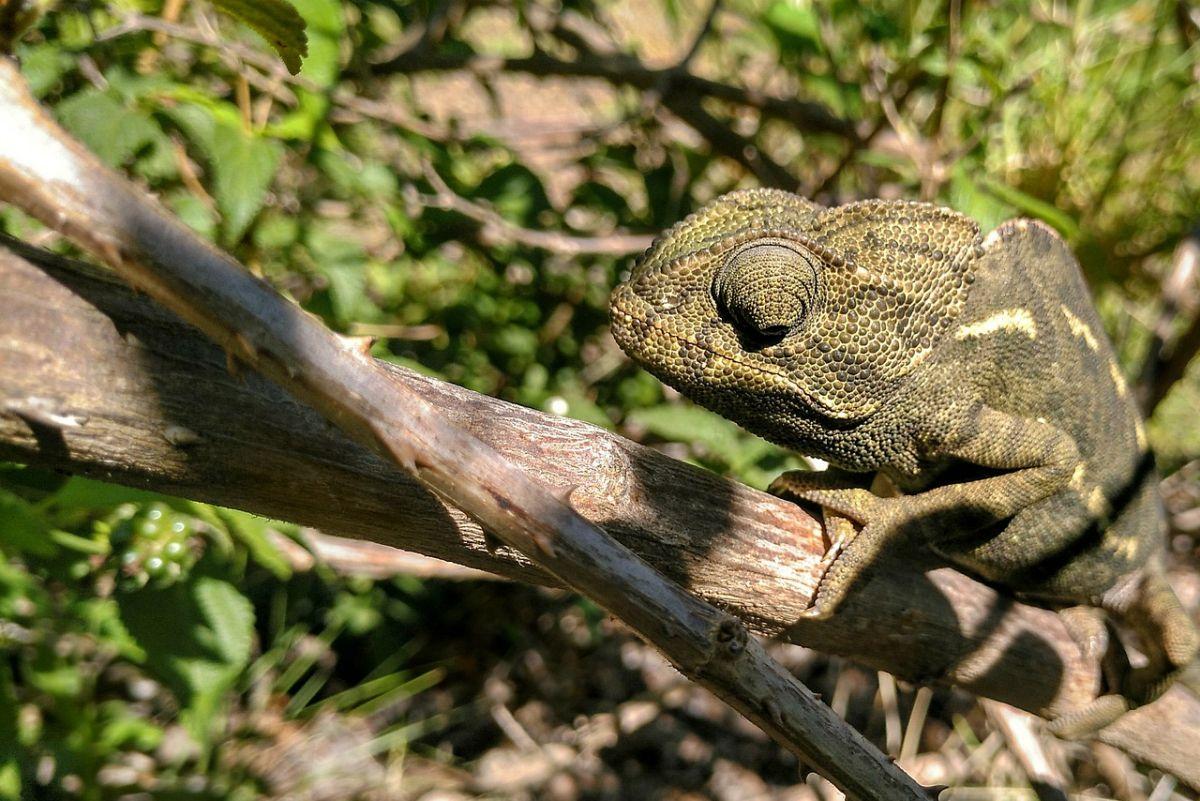
- Name: Common chameleon
- Scientific name: Chamaeleo chamaeleon
- Conservation status:
The common chameleon, also known as the Mediterranean chameleon, is a species of chameleon native to the coastal areas of the Mediterranean Basin, as well as the surrounding areas of the Red Sea.
It is the only chameleon that can be found in Europe (in fact, only in southernmost Portugal and Spain). It is threatened by habitat loss, predation by domestic animals, and roadkill. Despite this, it has a large range and a stable population.
—
So there you have them, these were my 24 animals found in Portugal. I hope you enjoyed this list and that you learned something new today.
In case you want to learn more about the Portugal wildlife, feel free to keep reading, as I still have lots of things to tell you about:
Endangered Animals of Portugal
This is definitely the saddest part of the list, but it is very important to raise awareness. Because of this, let’s go through the list of endangered animals in Portugal.
Here are the animals in danger of extinction in Portugal.
- Canarian oystercatcher
- Portuguese ibex
- Kemp’s ridley
- Sociable lapwing
- Atlantic sturgeon
- North Atlantic right whale
- Oceanic whitetip shark
- and 18 more…
- Western ruivaco
- Zino’s petrel
- Spinetail devil ray
- Mediterranean monk seal
- Iberian lynx
- and 33 more…
To see the full list of endangered species in Portugal, head over to the International Union for Conservation of Nature’s Red List.
What is the National Animal of Portugal?
Portugal national animal is the Iberian wolf.
As its name suggests, the Iberian wolf is endemic to the Iberian Peninsula, which is made up of Spain and Portugal. It can be found in the northernmost parts of the country.
There are about 2,200 to 2,700 Iberian wolves, which is the largest population in Western Europe. They are known as prized trophies for game hunters and are a symbol of pride, freedom, and might.
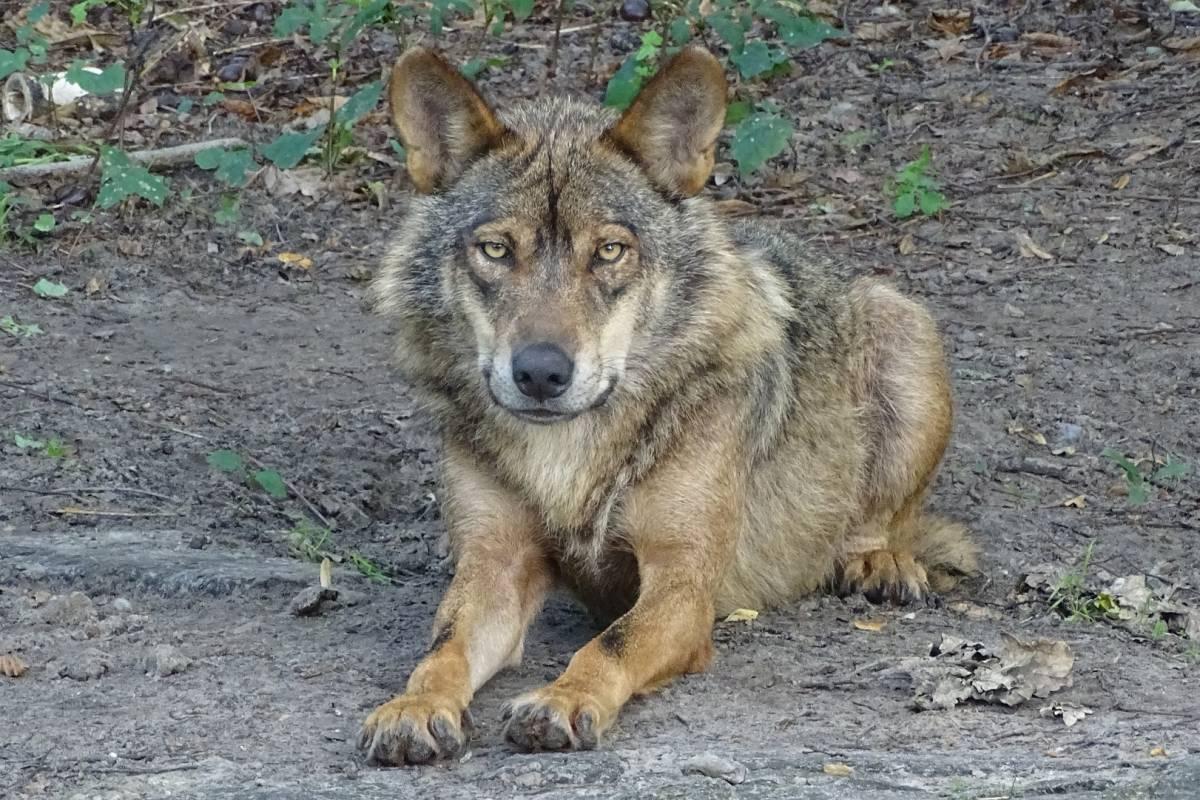
How Many Animals Native to Portugal?
What is the diversity of native animals in Portugal?
Let’s look at the total number of species of Chordata (mammals, birds, fishes, and reptiles).
Total number of animal species in Portugal: 1,726 (3,149 in total in Europe)
More About Animals in the World!
Loved these Portuguese wildlife facts? Want to see what animals live in other countries?
Then check out these posts:
Or click here to see ALL the facts up on the blog! Spoiler alert: there’s A LOT of them.
Share the knowledge! Click on the buttons below to share information about the wildlife of Portugal with your friends, and help them learn more about the world 🙂
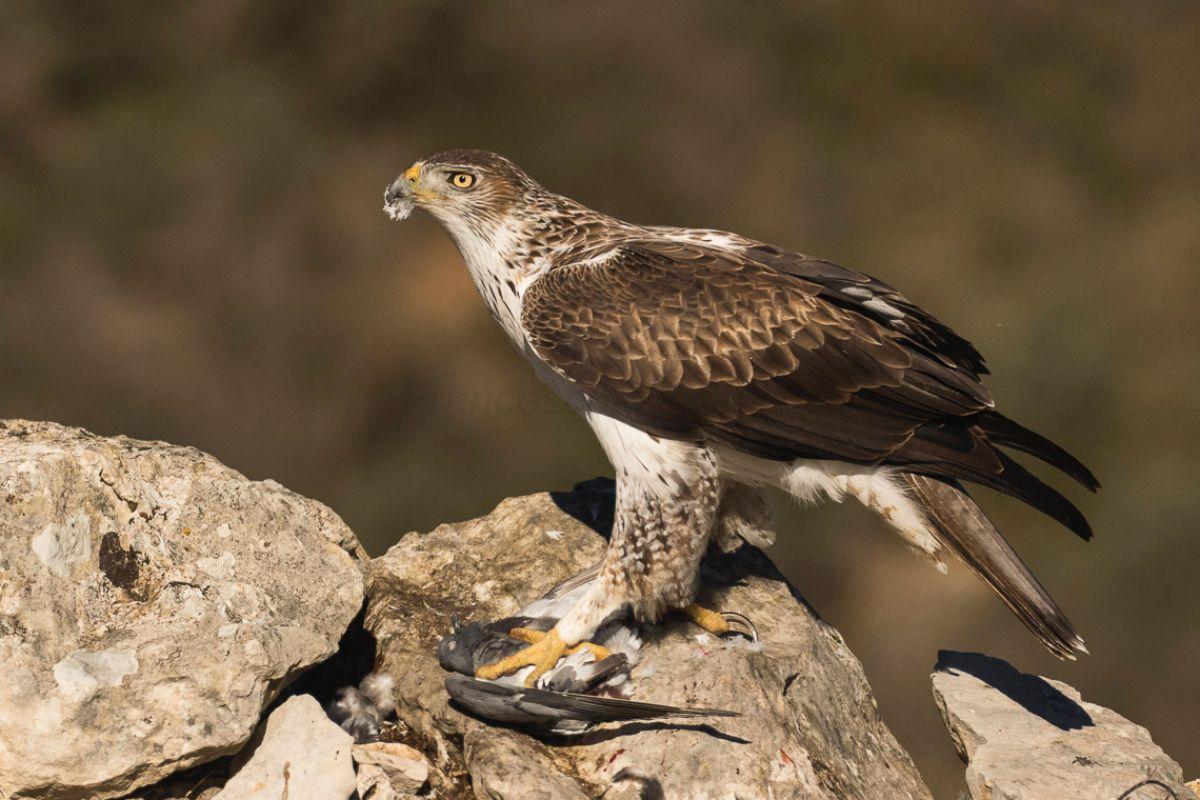
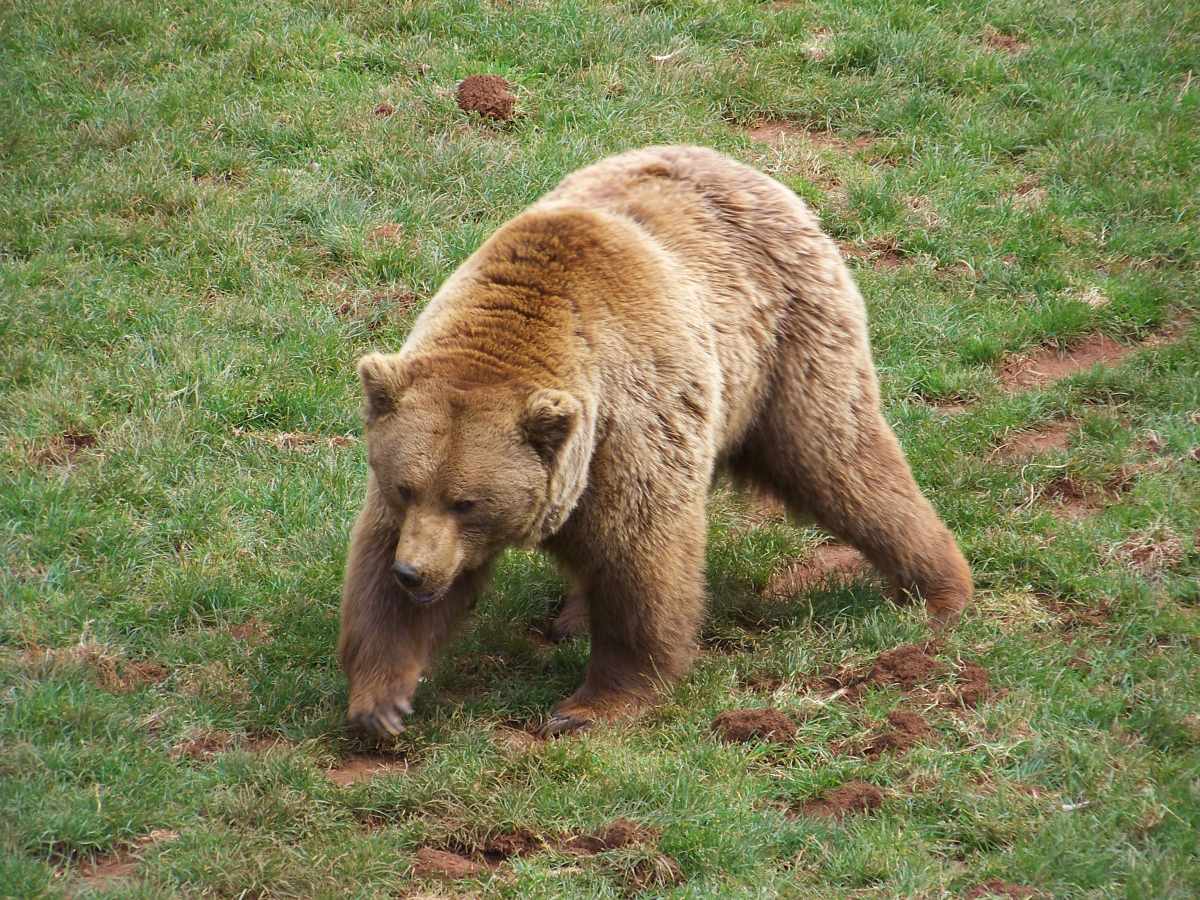

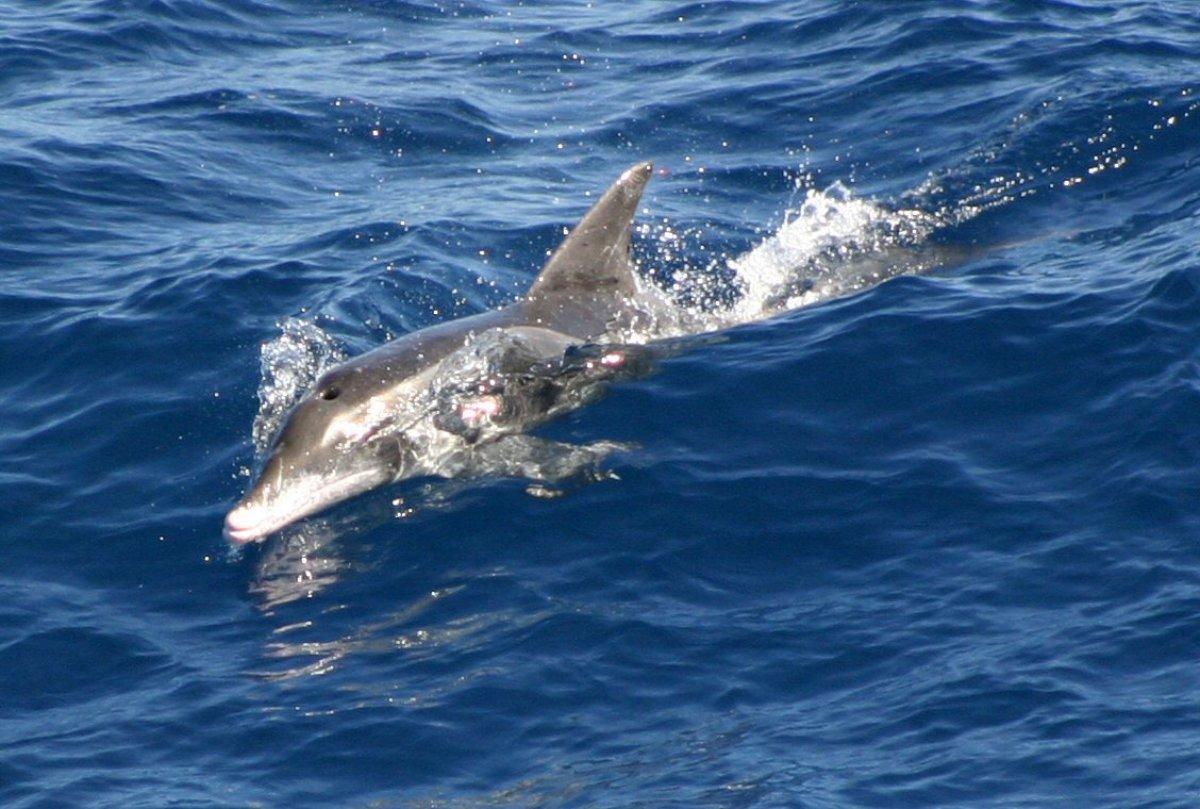
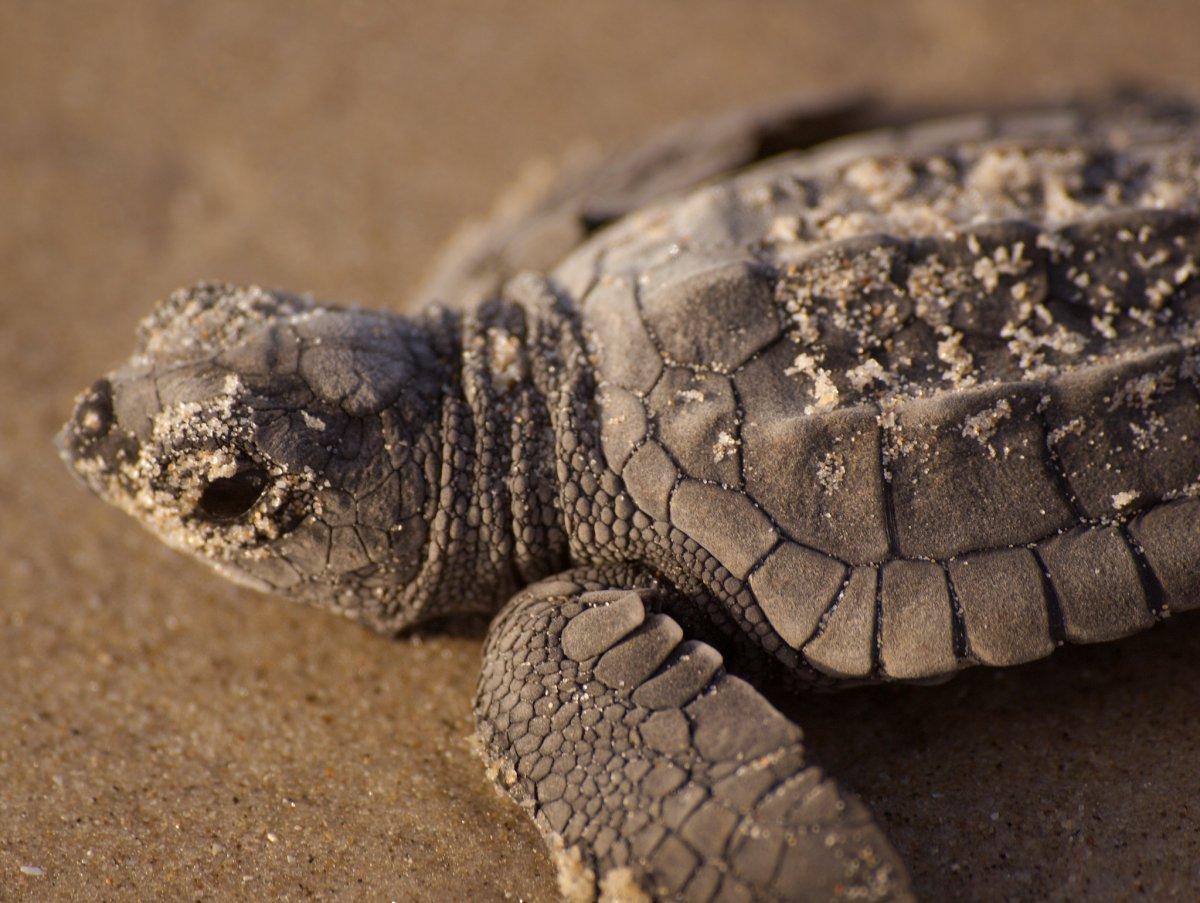
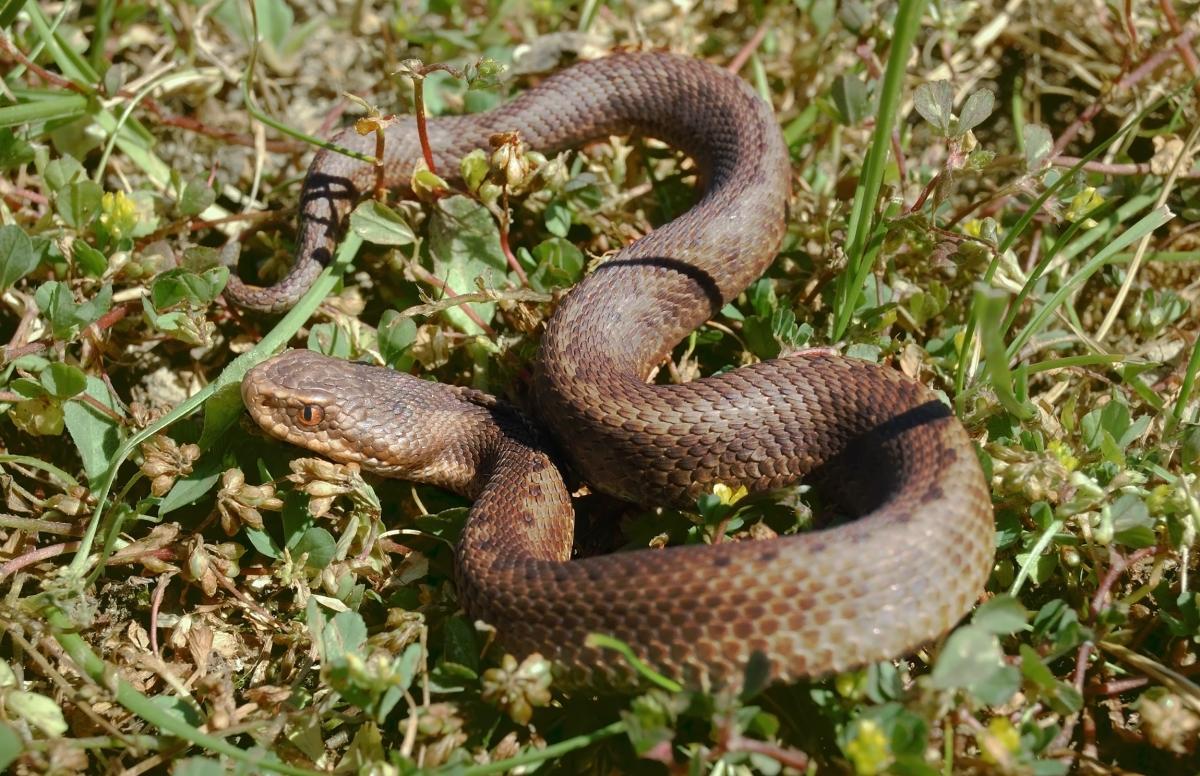

![10 Wild Animals in Lesotho [Wildlife in Lesotho]](https://www.kevmrc.com/wp-content/uploads/2022/12/10-wild-animals-in-lesotho.jpg)
![13 Wild Animals in Eswatini [Wildlife in Eswatini]](https://www.kevmrc.com/wp-content/uploads/2022/12/13-wild-animals-in-eswatini.jpg)
![35 Wild Animals in Colombia [Wildlife in Colombia]](https://www.kevmrc.com/wp-content/uploads/2022/07/35-wild-animals-in-colombia.jpg)
While riding my peleton in Algarve I thought I heard the female commentator say that bears live in Algarve. This pleasantly surprised me. So, I came to my computer finding this recap of Algarve Wildlife and sure enough I see a bear shown and listed. This is good. I say, “The more species the merrier life on earth is.” Man is not the most important species, in fact I could say we are not important at all.
I challenge, name 1 thing we have done or will do that is important for the planet.
Thanks for this helpful information. I thought you might like to know that the picture of the pine Martin seems to be missing, and the black stork picture looks to be a saddle-billed stork. I’ve seen them both and they are quite different. Maybe these can be fixed.